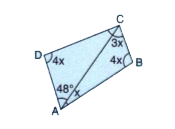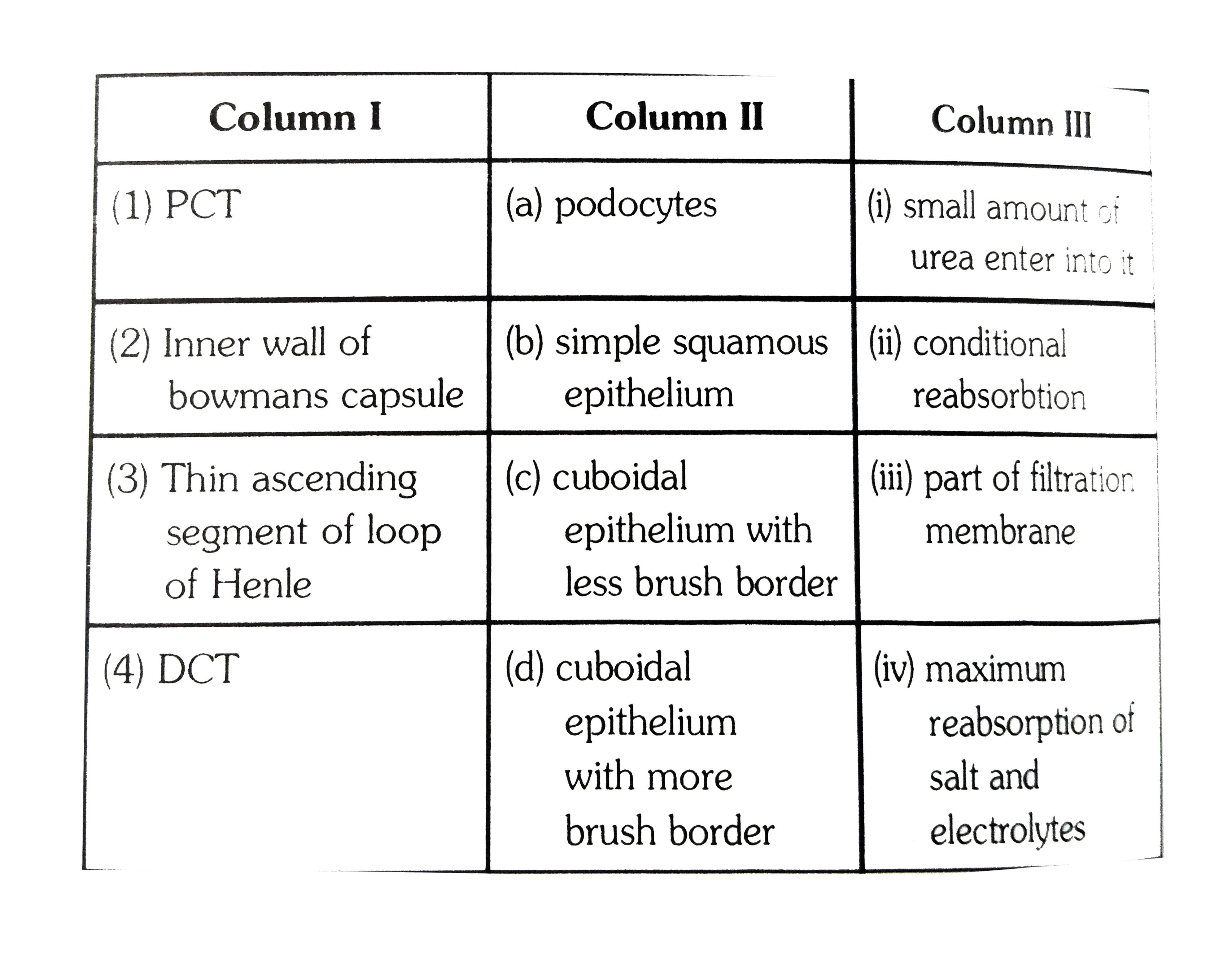Identify the examples of convergent evolution from the following :
(i) Flippers of penguins and dolphins
(ii) Eyes of octopus and mammals
(iii) Vertebrate brains
To identify the examples of convergent evolution from the given options, we need to understand what convergent evolution is. Convergent evolution occurs when unrelated organisms develop similar traits or adaptations due to similar environmental pressures or challenges.
1. Understand Convergent Evolution:
- Convergent evolution is the process where different species evolve similar traits independently, often because they adapt to similar environments or ecological niches.
2. Analyze the First Example:
- Flippers of Penguins and Dolphins:
- Penguins are birds, while dolphins are mammals. Both have evolved flippers to swim efficiently in water, despite their different evolutionary backgrounds. This is a classic example of convergent evolution.
3. Analyze the Second Example:
- Eyes of Octopus and Mammals:
- The eyes of octopuses (cephalopods) and mammals (like humans) have similar structures and functions, allowing them to see in their respective environments. Despite being from different evolutionary lineages, they have developed similar eye structures, making this another example of convergent evolution.
4. Analyze the Third Example:
- Vertebrate Brains:
- While vertebrate brains share certain structural similarities, they are not an example of convergent evolution. Instead, they are a result of divergent evolution, where different species have evolved from a common ancestor and have developed variations in brain structure.
Conclusion:
The examples of convergent evolution from the options provided are:
- (i) Flippers of penguins and dolphins
- (ii) Eyes of octopus and mammals
- Convergent evolution is the process where different species evolve similar traits independently, often because they adapt to similar environments or ecological niches.
- Flippers of Penguins and Dolphins:
- Penguins are birds, while dolphins are mammals. Both have evolved flippers to swim efficiently in water, despite their different evolutionary backgrounds. This is a classic example of convergent evolution.
- Eyes of Octopus and Mammals:
- The eyes of octopuses (cephalopods) and mammals (like humans) have similar structures and functions, allowing them to see in their respective environments. Despite being from different evolutionary lineages, they have developed similar eye structures, making this another example of convergent evolution.
- Vertebrate Brains:
- While vertebrate brains share certain structural similarities, they are not an example of convergent evolution. Instead, they are a result of divergent evolution, where different species have evolved from a common ancestor and have developed variations in brain structure.
The examples of convergent evolution from the options provided are:
- (i) Flippers of penguins and dolphins
- (ii) Eyes of octopus and mammals
Similar Questions
Out of the following , which , is an example of convergent evolution ?
(i) Eyes of octopus and mammals
(ii) Flipper of penguins and Dolphins
(iii) Sweet potato and potatoView SolutionChoose the pairs of organs that are a result of convergent evolution
i. Wings of butterflies and wings of birds.
ii. Flippers of penguins and flippers of dolphins
iii. Eyes of octopus and eyes of mammals.
iv. Thorns of Bougainvillea and tendrils of Cucurbita.
v. Sweet potato and potato.
vi. Vertebrate hearts and vertebrate brainsView Solution
Knowledge Check
- Question 1 - Select One
Identify the aquatic mammal(s) from the following
(i) Balaenoptera
(ii) Equus
(iii) Delphinus
(iv) Pteropus
(v) FelisAa) (i) and (iii)Bb) (ii) and (iv)Cc) (v) onlyDd) (iv) and (v) - Question 2 - Select One
From the following figure, find
(i)x
(ii) ∠ABC
(iii) ∠ACD A(i) x=18∘
A(i) x=18∘
(ii)∠ABC=124∘
(iii) ∠ACD=30∘B(i) x=16∘
(ii)∠ABC=104∘
(iii) ∠ACD=28∘C(i) x=26∘
(ii)∠ABC=114∘
(iii) ∠ACD=36∘D(i) x=26∘
(ii)∠ABC=104∘
(iii) ∠ACD=28∘
Identify the pairs of enantiomers and diastereomers from the following:
 View Solution
View SolutionIdentify the terrestrial mammals from the following .
(i) Balaenoptera (ii) Elephas
(iii) Delphinus (iv) Panthera
(v) macropusView SolutionIdentify the aquatic mammal(s) from the following
(i) Balaenoptera
(ii) Equus
(iii) Delphinus
(iv) Pteropus
(v) FelisView SolutionIdentify the examples of homologous structures from the following-
(i) Vertebrate hearts
(ii) Thorns in Bougainvillea and tendrils of Cucurbita.
(iii) Food storage-organs in sweet potato and potato.View SolutionIdentify the examples of homologous structures from the following-
(i) Vertebrate hearts
(ii) Thorns in Bougainvillea and tendrils of Cucurbita.
(iii) Food storage-organs in sweet potato and potato.View SolutionIdentify the correct match from the column I,II and III :−
 View Solution
View Solution

